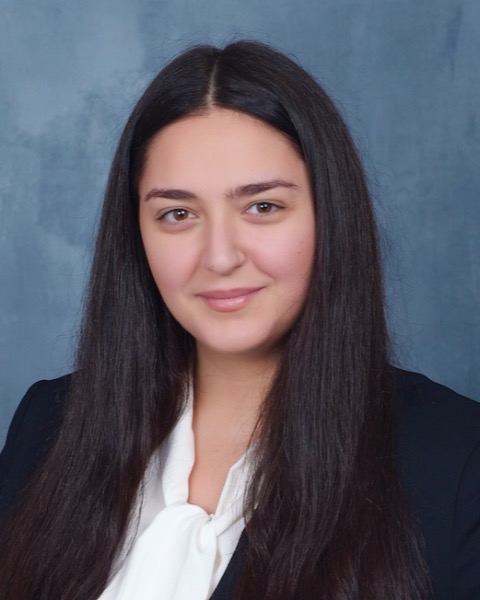Monday Poster Session
Category: Endoscopy Video Forum
P2729 - A Novel Suspension Bridge Technique for Endoscopic Submucosal Dissection of a Large Subepithelial Gastric Cardia Lesion

Joelle Sleiman, MD
Staten Island University Hospital, Northwell Health
Staten Island, NY
Presenting Author(s)
1Staten Island University Hospital, Northwell Health, Staten Island, NY; 2Staten Island University Hospital, Staten Island, NY
Introduction:
Endoscopic Submucosal Dissection (ESD) is an advanced endoscopic technique that allows for en bloc resection of subepithelial lesions located within the submucosal layer of the gastrointestinal (GI) tract. While ESD is widely used throughout the GI tract, its application in the gastric cardia presents unique challenges due to the cardia’s anatomic complexity and constant movement from respiration and cardia pulsations.We present a case of a large leiomyoma in the gastric cardia successfully removed via a modified ESD using a suspension bridge technique supported by natural traction.
Case Description/
Methods:
Case presentation
A 47-year-old male with a history of hypertension and GERD presented for evaluation of reflux symptoms and dysphagia. The patient underwent EGD/EUS, which showed a hypoechoic, well-defined lesion arising from the muscularis mucosa and measuring 35 mm x 15 mm. Multiple fine needle biopsies were performed. Pathology was consistent with leiomyoma of the stomach wall. Due to its primarily sub-mucosal, U-shaped, extraluminal position, accessing this lesion for dissection presents a unique challenge. To manage this, we employ a 'suspension bridge' technique, by creating and leaving behind suspension-like pedicles of submucosal bridges, to stabilize the lesion.
Endoscopic Technique
After precise localization of the lesion, we inject into the submucosa to create a mucosal flap. This flap serves as the initial dissection point. As we extend the submucosal lift, we begin dissecting from the proximal end toward the GE junction and the gastric cardia along the lesser curve. Given the twisted nature of the lesion, we deliberately halted the dissection, creating suspension-like pedicles of submucosal bridges to stabilize the lesion. This stepwise, segmented approach was repeated circumferentially, performing additional submucosal injections and dissections while preserving pedicles between each section. Once the circumferential dissection was complete, the remaining pedicles were carefully transected. This segmented approach prevents twisting and premature detachment, maintaining structural support and ensuring a complete en bloc resection with clear margins. We presented a successful application of this novel approach, with a 6-month follow-up showing no recurrence or complications. This gravity-assisted traction technique, utilizing strategically preserved pedicles to stabilize the lesion, offers a promising solution for anatomically challenging lesions during ESD.
Discussion:
Disclosures:
Joelle Sleiman indicated no relevant financial relationships.
Malek Kreidieh indicated no relevant financial relationships.
Hassan Al Moussawi indicated no relevant financial relationships.
Jean Chalhoub indicated no relevant financial relationships.
Youssef El Douaihy indicated no relevant financial relationships.
Sherif Andrawes indicated no relevant financial relationships.
Joelle Sleiman, MD1, Malek Kreidieh, MD2, Hassan Al Moussawi, MD1, Jean Chalhoub, MD1, Youssef El Douaihy, MD1, Sherif Andrawes, MD1. P2729 - A Novel Suspension Bridge Technique for Endoscopic Submucosal Dissection of a Large Subepithelial Gastric Cardia Lesion, ACG 2025 Annual Scientific Meeting Abstracts. Phoenix, AZ: American College of Gastroenterology.
